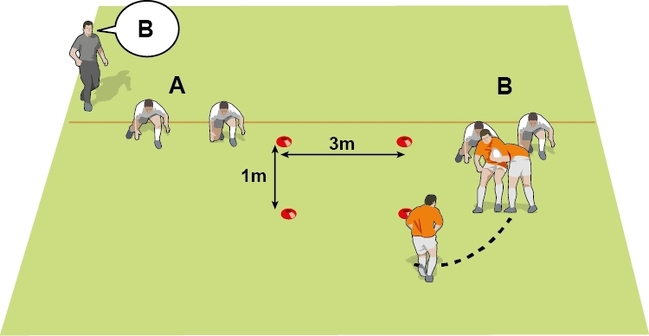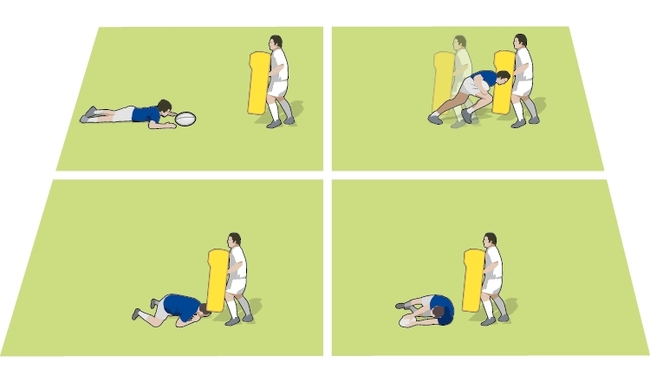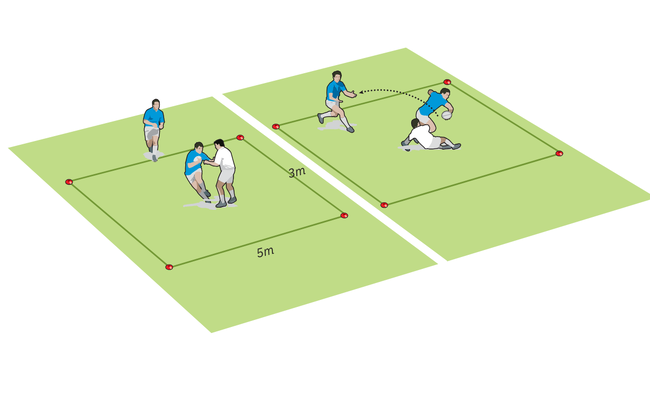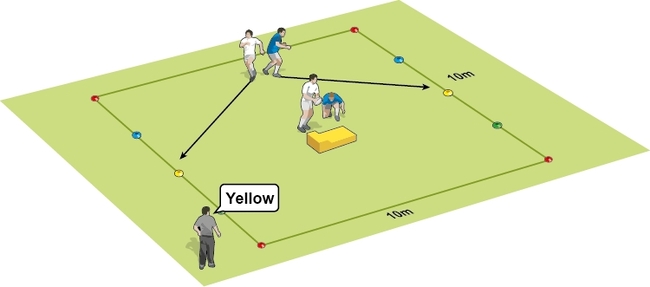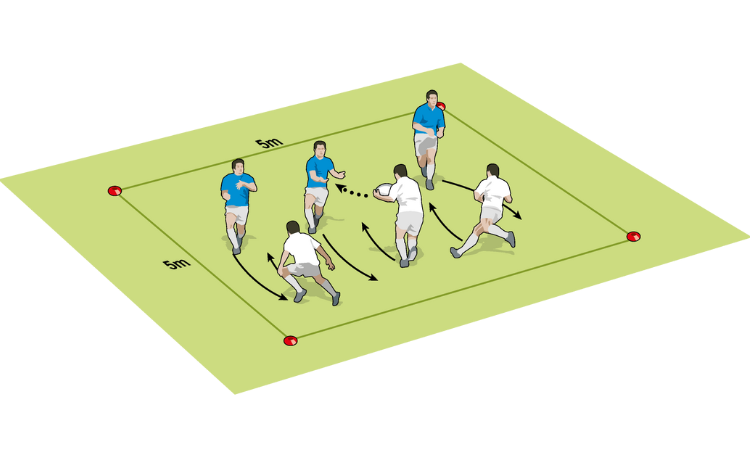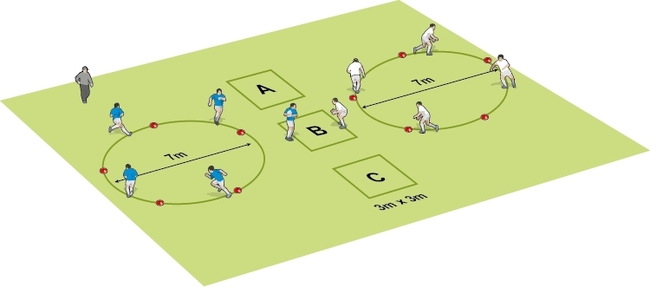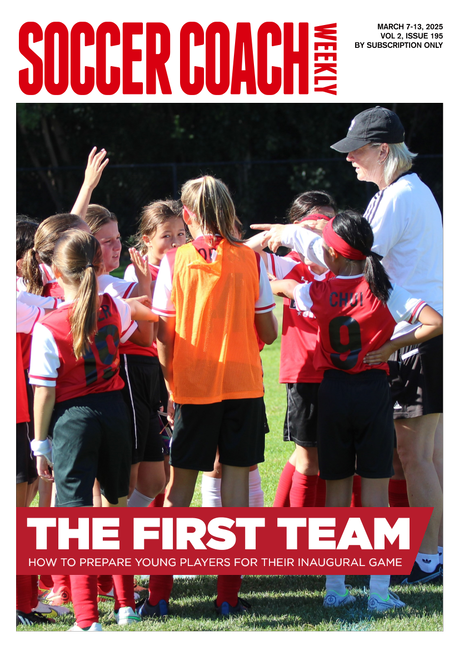Rugby drill for defending the ruck
Rucking & Maulingby Dan Cottrell
Close defence at the ruck
One player stands behind the ruck to organise your players. This may be the scrum half (the number 9). Defensively, this player provides protection from a drive through the ruck.
If the ball is won, this player would have the option to kick or pass, either for another player to kick or to initiate an attack.
Two players stand either side of the ruck. The closest player to the ruck is the “pillar” or “guard”. They stand just by the back foot and ensure no player attacks by the side of the ruck. The second player out is the “post” or “bodyguard”.
They should stand no more than two arms’ lengths away from the “guard”, protecting the outside. They can also double up if an attack comes close into the ruck.
The three point stance
If they have time, players close to rucks could adopt a “three point stance”. This means they make three contact points with the ground, two legs and one arm.
From this stance they are in a good position to drive forward to tackle players close to the ruck. It is based on American Football’s “linemen”.

Winning through defence
There is more to a defensive strategy than making big hits. Here are some things to think about and rugby coaching tips to help you plan your strategy.
Numbers
Some rugby coaches advocate committing only two players to any defensive ruck. Others argue you should get three or four players to the ruck.
As a rugby coach, you need to balance trying to disrupt good possession by contesting the ruck, with leaving enough players spread across the field to provide adequate defensive cover elsewhere.
The decision depends on your players’ rucking and defensive capabilities, as well as field position, the opposition’s rucking ability, your team’s strategy, etc.
Generally, however, committing more than four players to a ruck is unnecessary. The fifth player arriving at a ruck is unlikely to make much difference, due to the amount of bodies around the ball.
If you are looking to improve your players' all-round rucking skills, order the Coaching Rugby Manual - specifically created for new and aspiring coaches of junior players.
One player stands behind the ruck to organise your players. This may be the scrum half (the number 9). Defensively, this player provides protection from a drive through the ruck.
If the ball is won, this player would have the option to kick or pass, either for another player to kick or to initiate an attack.
Two players stand either side of the ruck. The closest player to the ruck is the “pillar” or “guard”. They stand just by the back foot and ensure no player attacks by the side of the ruck. The second player out is the “post” or “bodyguard”.
They should stand no more than two arms’ lengths away from the “guard”, protecting the outside. They can also double up if an attack comes close into the ruck.
The three point stance
If they have time, players close to rucks could adopt a “three point stance”. This means they make three contact points with the ground, two legs and one arm.
From this stance they are in a good position to drive forward to tackle players close to the ruck. It is based on American Football’s “linemen”.

Winning through defence
There is more to a defensive strategy than making big hits. Here are some things to think about and rugby coaching tips to help you plan your strategy.
Numbers
Some rugby coaches advocate committing only two players to any defensive ruck. Others argue you should get three or four players to the ruck.
As a rugby coach, you need to balance trying to disrupt good possession by contesting the ruck, with leaving enough players spread across the field to provide adequate defensive cover elsewhere.
The decision depends on your players’ rucking and defensive capabilities, as well as field position, the opposition’s rucking ability, your team’s strategy, etc.
Generally, however, committing more than four players to a ruck is unnecessary. The fifth player arriving at a ruck is unlikely to make much difference, due to the amount of bodies around the ball.
If you are looking to improve your players' all-round rucking skills, order the Coaching Rugby Manual - specifically created for new and aspiring coaches of junior players.
Newsletter Sign Up
Coaches Testimonials

Gerald Kearney, Downtown Las Vegas Soccer Club

Paul Butler, Florida, USA

Rick Shields, Springboro, USA

Tony Green, Pierrefonds Titans, Quebec, Canada
Subscribe Today
Be a more effective, more successful rugby coach
In a recent survey 89% of subscribers said Rugby Coach Weekly makes them more confident, 91% said Rugby Coach Weekly makes them a more effective coach and 93% said Rugby Coach Weekly makes them more inspired.
Get Weekly Inspiration
All the latest techniques and approaches
Rugby Coach Weekly offers proven and easy to use rugby drills, coaching sessions, practice plans, small-sided games, warm-ups, training tips and advice.
We've been at the cutting edge of rugby coaching since we launched in 2005, creating resources for the grassroots youth coach, following best practice from around the world and insights from the professional game.




